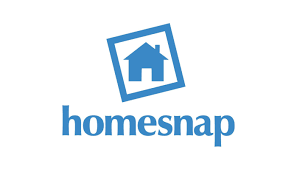5 Types of Insurance Every Homeowner Needs
As a homeowner, it’s important to protect your investment and mitigate potential risks. Here are five types of insurance that every homeowner should consider:
-
1 – Homeowners Insurance: This is a fundamental insurance policy that covers damage to your home and its contents due to covered perils such as fire, theft, vandalism, or certain natural disasters. It typically provides coverage for the structure of your home, personal belongings, liability protection, and additional living expenses if your home becomes uninhabitable.
-
2 – Flood Insurance: Standard homeowners insurance policies typically don’t cover flood damage. If you live in an area prone to flooding or near a body of water, it’s essential to obtain separate flood insurance. This policy helps protect your home and belongings from flood-related damage caused by heavy rains, hurricanes, or overflowing rivers.
-
3 – Earthquake Insurance: If you reside in an earthquake-prone region, it’s worth considering earthquake insurance. This coverage helps repair or rebuild your home and replaces damaged belongings in the event of an earthquake. Standard homeowners insurance policies usually exclude earthquake-related damages.
-
4 – Umbrella Insurance: Umbrella insurance provides additional liability coverage that goes beyond the limits of your standard homeowners insurance policy. It offers protection if you are sued for damages or injuries that exceed your existing liability coverage. This insurance is especially important if you have substantial assets that could be at risk in a lawsuit.
-
5 – Personal Liability Insurance: Personal liability insurance safeguards you against legal claims for bodily injury or property damage caused by you, your family members, or even your pets. It covers legal defense costs and any settlements or judgments against you. Personal liability insurance is typically included in standard homeowners insurance policies but may have coverage limits that can be extended with umbrella insurance.
Remember, insurance needs can vary based on factors such as location, home value, personal circumstances, and risk tolerance. It’s always advisable to consult with an insurance professional or agent who can provide personalized guidance tailored to your specific needs.
Why would banks want you to have homeowners insurance when they give you a mortgage?
-
Protecting Their Investment: When a bank lends you money to purchase a home, they have a significant financial stake in the property. Homeowners insurance protects their investment by ensuring that if your home is damaged or destroyed, the insurance policy will help cover the costs of repair or rebuilding. This reduces the bank’s risk of loss.
-
Meeting Lender Requirements: Many mortgage lenders have specific requirements for insurance coverage to protect their interests. These requirements are often outlined in the mortgage agreement and may include minimum coverage limits and specific types of coverage, such as dwelling coverage, liability insurance, and more.
-
Ensuring Continuous Coverage: Homeowners insurance is typically required to be maintained throughout the duration of the mortgage. Banks want to ensure that the property remains protected throughout the loan term. Requiring homeowners insurance helps guarantee that the property is adequately insured against potential risks, reducing the likelihood of financial loss to both you and the lender.
-
Compliance with Laws and Regulations: In some cases, mortgage lenders may be legally obligated to require homeowners insurance. Government-backed mortgage programs, such as those offered by the Federal Housing Administration (FHA) or the Department of Veterans Affairs (VA), have specific insurance requirements that must be met for the loan to be approved.
By requiring homeowners insurance, banks are mitigating their financial risks and ensuring that their collateral (the home) is adequately protected. This helps provide security to both the homeowner and the lender in the event of damage or loss.
Is mortgage insurance required on a conventional loan?
Mortgage insurance requirements for conventional loans can vary depending on certain factors, such as the down payment amount and the loan-to-value (LTV) ratio. Here’s a breakdown of the mortgage insurance requirements for conventional loans:
-
Private Mortgage Insurance (PMI): If you make a down payment of less than 20% on a conventional loan, most lenders will typically require you to obtain private mortgage insurance (PMI). PMI protects the lender in case you default on the loan. It is an additional cost that is added to your monthly mortgage payment.
-
PMI Cancellation: The Homeowners Protection Act (HPA) provides guidelines for canceling PMI on conventional loans. Once your loan balance reaches 80% of the home’s original appraised value or the loan-to-value ratio drops to 80%, you can request to cancel PMI. If you don’t request cancellation, PMI will automatically terminate when the loan balance reaches 78% of the home’s original value.
-
Lender-Paid Mortgage Insurance (LPMI): In some cases, lenders may offer the option of lender-paid mortgage insurance (LPMI) on conventional loans. With LPMI, the lender pays for the mortgage insurance upfront or includes it in the interest rate. This eliminates the need for a separate PMI payment, but it may result in a slightly higher interest rate.
It’s important to note that mortgage insurance requirements can vary among lenders, and specific terms and conditions may apply. Consulting with a mortgage lender or loan officer will provide you with the most accurate and up-to-date information on mortgage insurance requirements for conventional loans based on your unique circumstances.
When can you drop PMI on a conventional loan?
You can typically drop private mortgage insurance (PMI) on a conventional loan under the following circumstances:
-
Automatic Termination: Once your loan balance reaches 78% of the home’s original appraised value or the loan-to-value (LTV) ratio drops to 78%, the lender is required to automatically terminate PMI. This is based on the original value of the home at the time of purchase, not its current value.
-
Request for Cancellation: You have the right to request cancellation of PMI once your loan balance reaches 80% of the home’s original appraised value or the LTV ratio drops to 80%. This requires you to submit a written request to your lender. Some lenders may also have additional requirements, such as a minimum waiting period or evidence of a good payment history.
-
Appreciation: If your home’s value has increased significantly due to market appreciation or home improvements, you may be able to reach the required LTV ratio to cancel PMI more quickly. In this case, you may need to provide a new appraisal or other documentation to demonstrate the increased value.
It’s important to review your specific loan agreement and consult with your lender to understand their specific PMI cancellation policies and procedures. Keep in mind that if you have a higher-risk loan, such as an adjustable-rate mortgage (ARM), the cancellation rules may differ.
Additionally, if you are unsure about the PMI cancellation requirements or believe you have met the necessary criteria but are having difficulty canceling PMI, it’s advisable to reach out to your lender directly for clarification and assistance.

Are you ready to take the next step to buy(or sale) your home and start building a legacy for your family?…Let me help you!
“Your Dream Home is my Mission”. I am a Brazilian Licensed Realtor at Re-Connect, LLC with 18+ years of experience in the Real Estate industry. I speaks 3 languages (Portuguese, English, Spanish). Let me join your journey in the Real Estate Industry, and receive my assistance above and beyond to accomplish your DREAM!
CALL NOW: (617) 201-9188 Ana Roque | 209 West Central Street, Natick, MA











